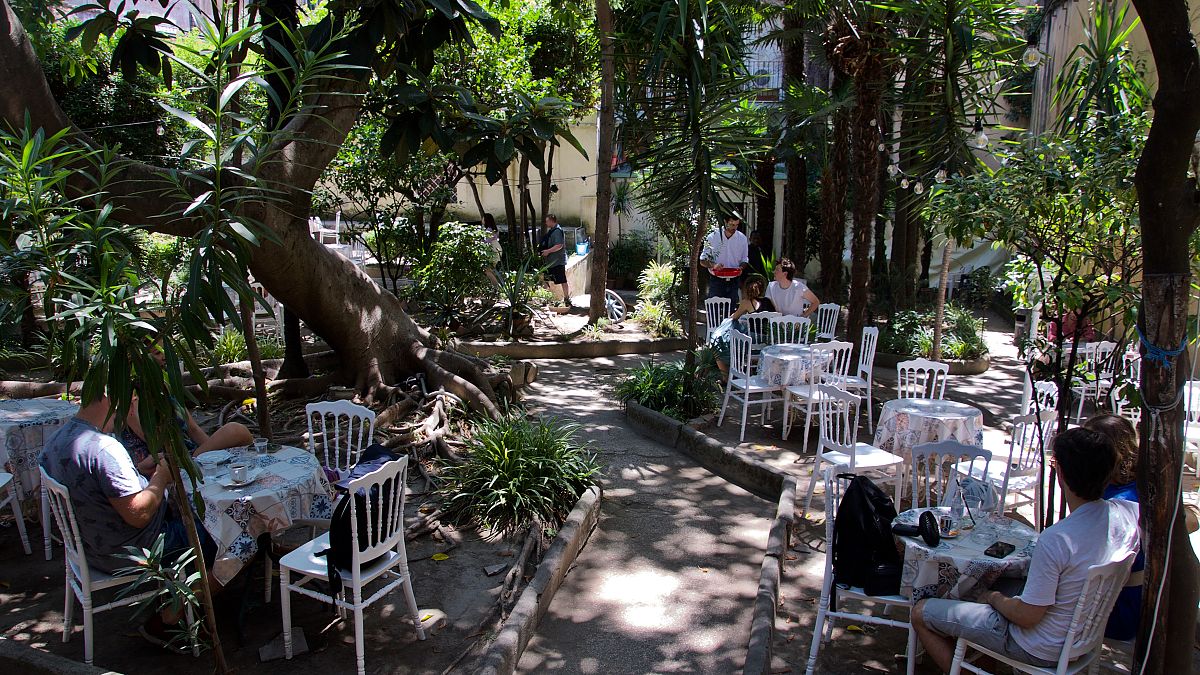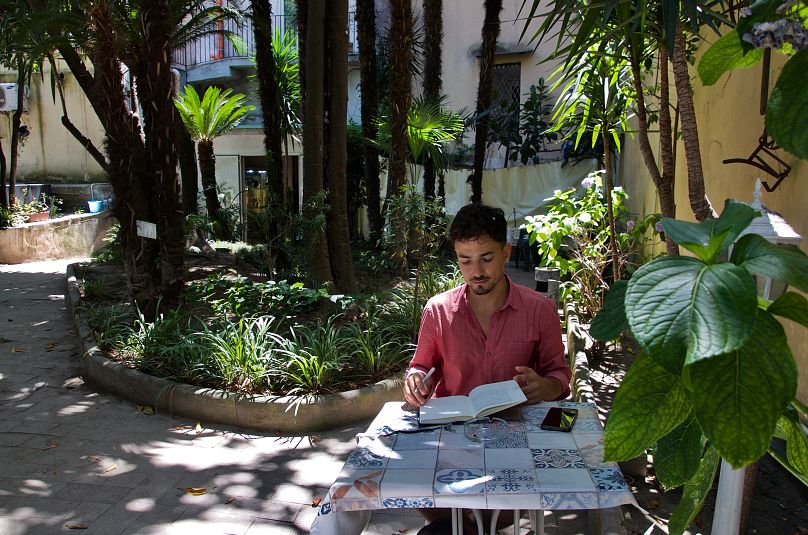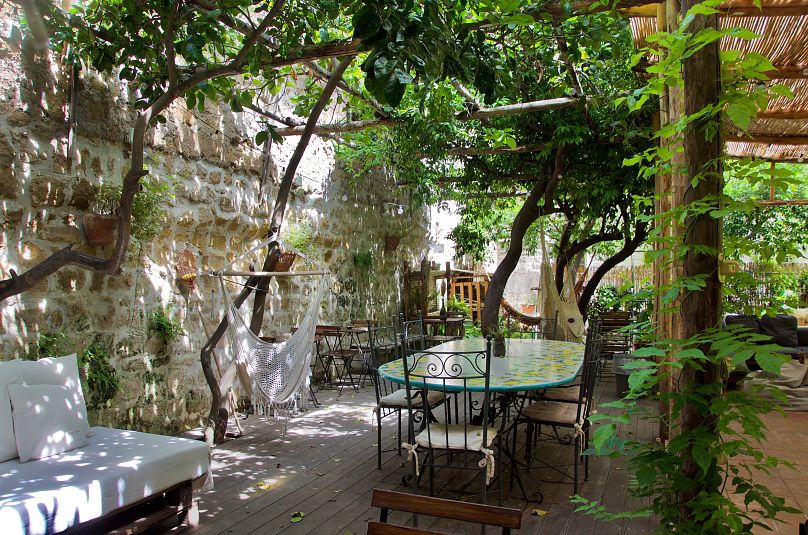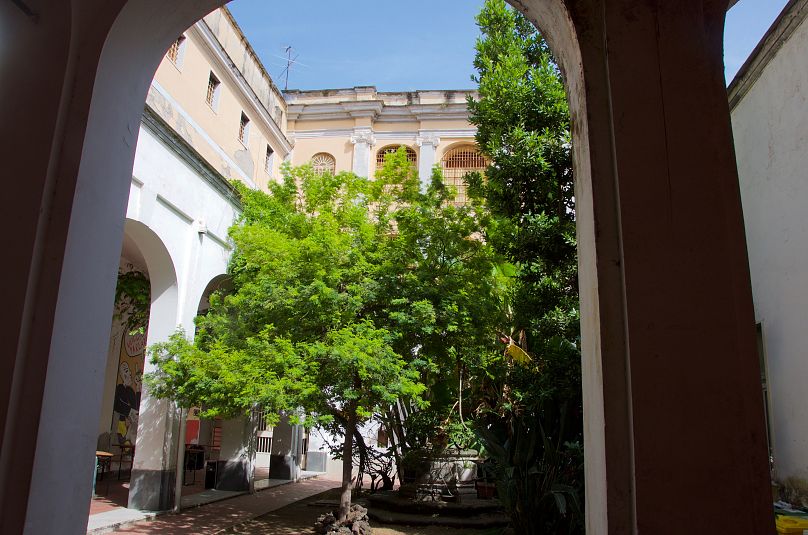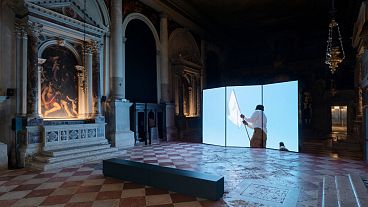In a city that suffers from a chronic lack of green areas, some are turning to old forgotten spaces to give people a breath of fresh air.
Naples’ historical centre is a maze of stone, concrete and volcanic rock. The winding streets of one of Europe’s most densely populated cities can seem like they are part of a never ending urban jungle. To make matters worse, the black and grey stone used in most of the pedestrian areas of the city absorb the summer heat and amplify the already skyrocketing temperatures.
Aside from only a handful of public parks, there aren’t that many places where the inhabitants of the city centre can go to seek some shade and breathe clean air. Unless you've got the inside track.
The city is scattered with small, hidden gardens in architecturally impossible places inside of residential buildings and structures that have been abandoned and renovated. Some of them are only decades old while others are hundreds.
On a blistering summer day, I met up with Simone Castaldi, a 30-year-old architect and Phd student in heritage development in Naples. He explains that historically, the only people who could afford green spaces were the wealthy.
Looking at a map, he points out that the only specks of green in the city’s historic centre are the small private courtyards of apartments or diplomatic structures.
One of which, we were in.
Although you have to climb up stairs to get to the garden of Palazzo Venezia, its still technically on the ground level. Since Naples was built on a slope, the structure of the city is terraced, giving the illusion that you’re on the first floor when you’re on the ground level and vice versa. A reoccurring phenomenon with nearly all of the city’s once private green spaces.
Palazzo Venezia
Located in the heart of Naples’ historic centre, Palazzo Venezia was built in the 1400s and served as the embassy to the Venetian Republic for nearly 400 years. The garden on the first floor of the building has now been renovated into a bar open to the public.
In order to reach the garden you must traverse through a tight, cave-like staircase at the far end of the building up a flight of stairs that opens up into a hallway. After taking a right, the hallway leads you past the bar and into a garden with soaring palm trees and cacti. As soon as you walk into the garden the temperature drops several degrees and you feel like you walked into a different climate.
Simone believes that where we are standing is part of the original ground of Naples. “There are no rooms under us,” he says. “Under this garden could be the remnants of the original slope the city was built on in the first century BCE.”
While this is the most well-known hidden garden in the city centre, it is far from the only one.
Hopestel
A 30 minute walk west of Palazzo Venezia will lead you to the Avvocata neighbourhood, a working-class, residential area with only a handful of shops and the occasional motorbike buzzing by.
A lot less obvious than Palazzo Venezia, in order to enter this garden you must press the buzzer outside the door and ask to go to the bar. Once the door opened, you walk into a small courtyard and take the stairs to the first floor and go through another wooden door where the floor opens up to a huge green space. Orange trees and other greenery surround a central yard. At the far end of the garden there is a shaded area with hammocks and tables to relax and grab a drink or study.
Before being converted into a bar/ hostel, this green space served as community cafeteria for the communist party. Before them still, the area was used as a nursery.
Daniele Giancotti, one of the owners of Hopestel: Secret Garden, says that one of the beautiful things about the space is how unexpected it is in this neighbourhood.
“You walk through these chaotic streets and pass these buildings and the last thing you expect to find is this garden, this oasis in the middle of all of this.”
The community is now slowly starting to reclaim these green areas that were once exclusive to the city’s elite while creating a space where regular people can relax and enjoy what little shade they can find without having to pay a premium.
Ex OPG - Je So' Pazzo
Many leftist groups in the city have been doing this exact thing over the past decade: finding abandoned structures and renovating them to serve the community. These spaces are called centri sociali or social centres and are scattered across Naples’ urban sprawl. One of the largest centri sociali is Ex OPG in the Materdei neighbourhood.
The building now serving the community used to be an ex-Franciscan convent that was later converted into a mental hospital and then subsequently abandoned in 2008. In 2015, a group of students, workers and activists occupied the abandoned building to create a space to serve the greater community.
Located just above an extremely busy intersection, the closer you get to the entrance of the building, the more the honking of the cars and the whirring of mopeds becomes a distant sound.
Although the gardens in Ex OPG are not necessarily the centrepiece of the complex, they serve the same use as the other spaces where people from all walks of life can escape the chaos of the city and be at ease for a bit.
Floriana, 18, is an activist that is a frequent participant at Ex OPG and says that green spaces in Naples can serve a particular purpose.
“These spaces are proven not only to calm people but also to reduce crime," she explains. “There is the opportunity to have a lot more green spaces in the city. All they need to do is find them and fix them up.”
Future of green spaces in Naples
Multiple studies point out that maintained green spaces in urban environments can contribute to reducing crime. While other studies show that green spaces can have a positive impact on people’s overall comfort and a reduction in temperature.
The tricky part in a city like Naples is finding areas to create those spaces.
The solution might be right under the city’s nose. Naples has hundreds of abandoned spaces - from churches to former hospitals to old residential buildings with overgrown courtyards that have been abandoned for years.
A group of researchers led by professor Pasquale Miano at the University of Naples Federico II are looking how to connect all of the city’s abandoned green spaces and make them accessible to the public. The idea was developed for the 2016 National Research Project “The City of Care and the Care of the City.”
If the project were to be completed as planned, it could completely transform how green spaces are used in the Mediterranean port city.
While Naples continues to struggle economically and the prospect of any large green development projects seems like a distant dream, Simone believes the effects of such a project would have an immediate impact on the quality of people’s lives in the city.
“If we take care of the city, the city will take care of us in return.”
